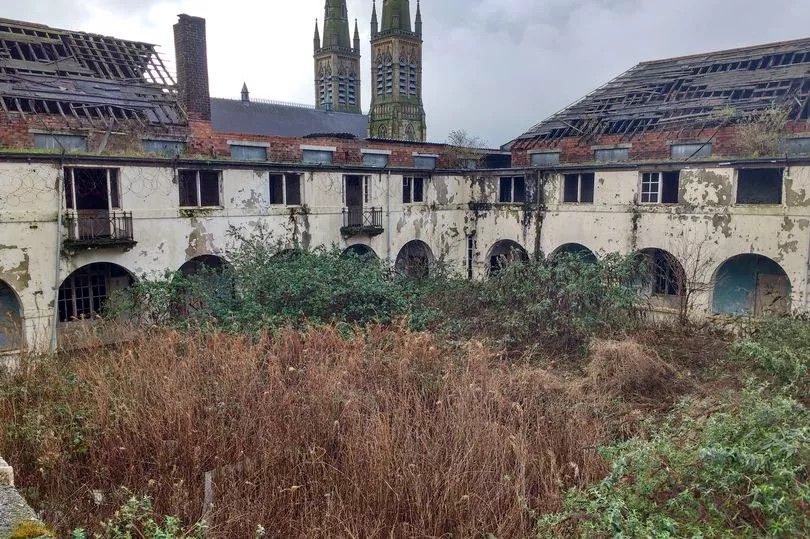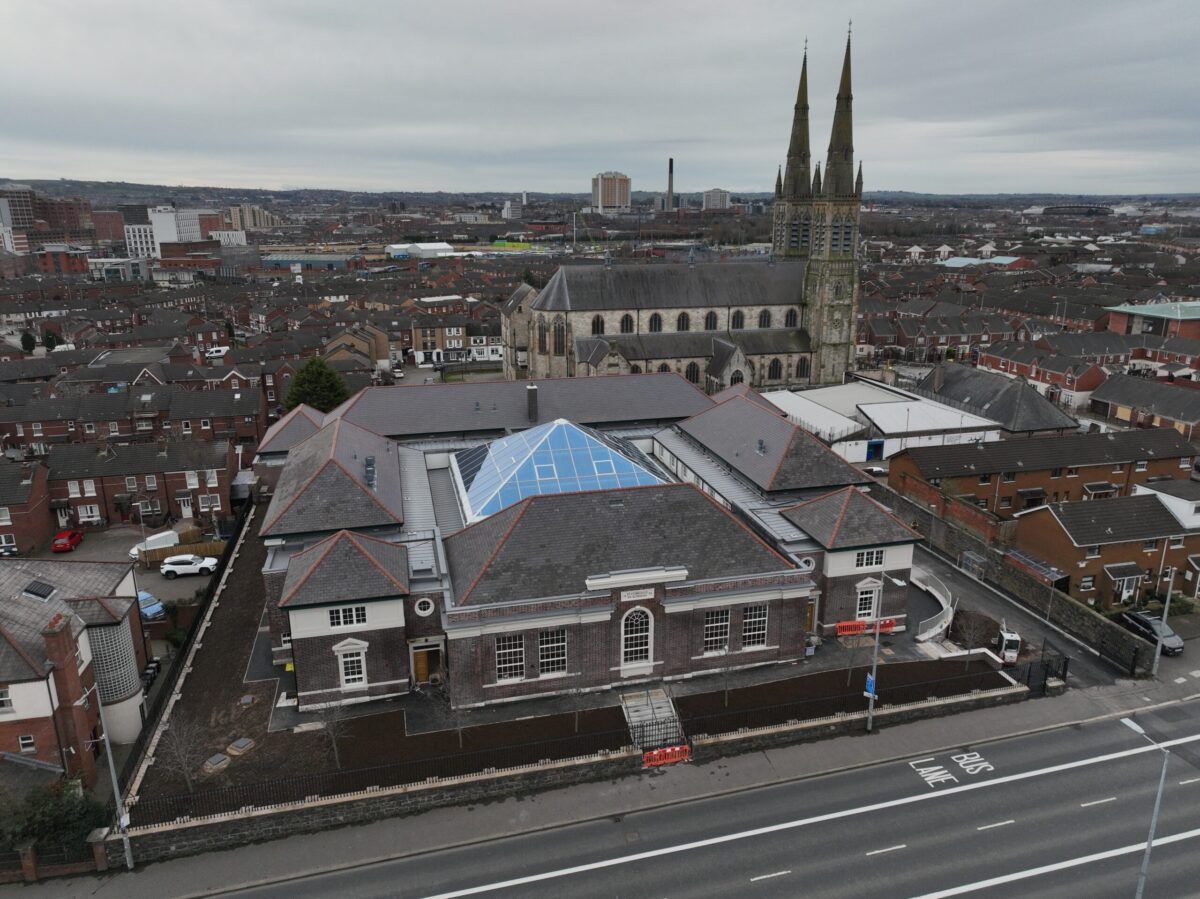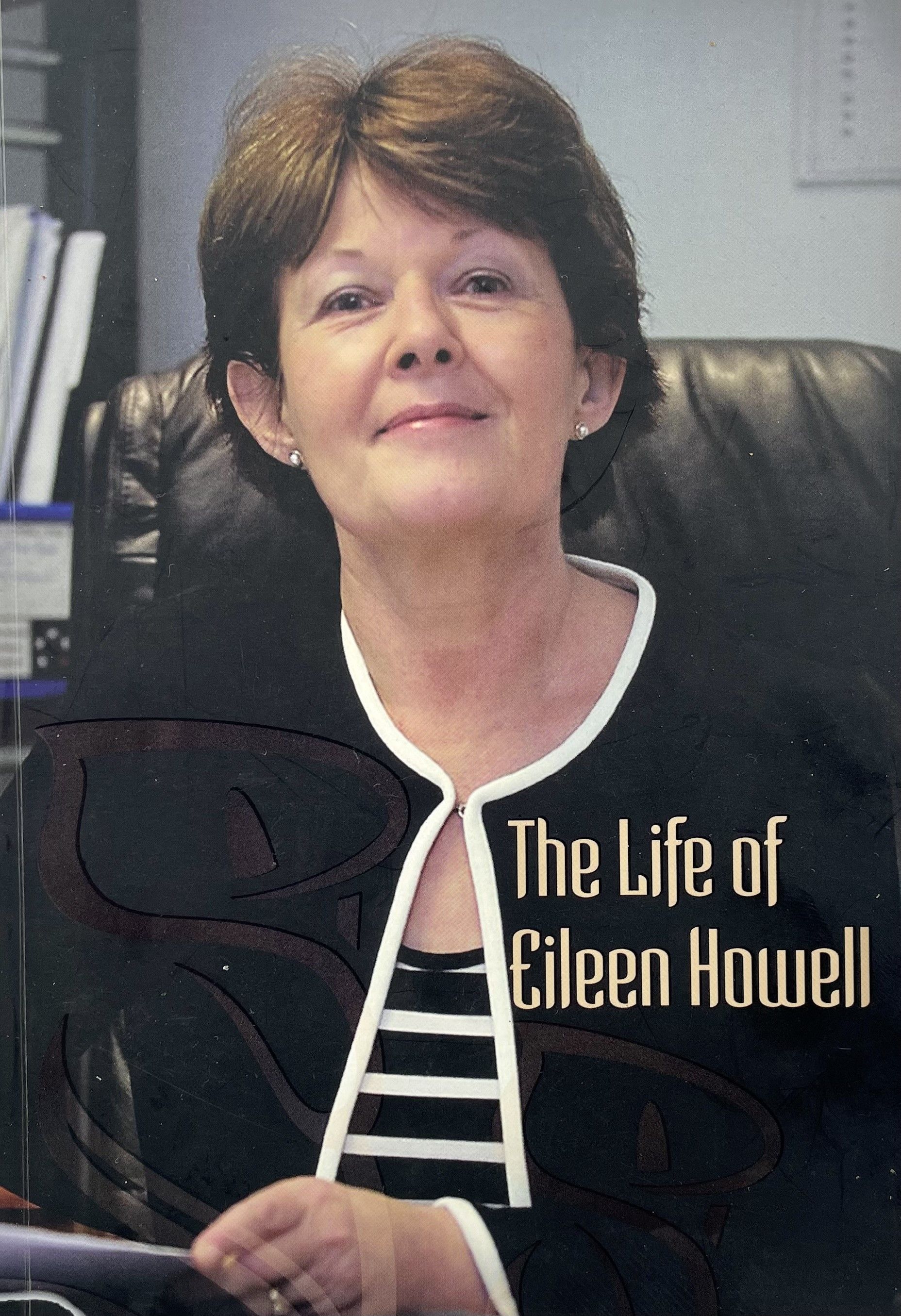St. Comgall’s/Ionad Eileen Howell in Divis Street will be formally opened next week, on Thursday, June 22.
The multi-million pound project has been 21 years in the making. The transformation of what was for many years a derelict building has been amazing. All of those who have contributed in any way to its successful renovation should be very proud of their efforts.
Just over 20 years ago, St. Comgall’s, which stands in the shadow of Divis Tower, had fallen into a scandalous state of disrepair. It was regularly targeted by anti-social elements and the building was a blight on the local community and environment.
As the MP for West Belfast I spoke to Eileen Howell in the Falls Community Council about the possibility of turning St. Comgall’s into a community enterprise – similar to Conway Mill – and one that could be a resource for the community and create sustainable jobs.
Eileen was an experienced community activist and champion for West Belfast who put her considerable energy into tackling the endemic inequalities and injustices endured by the nationalist West Belfast community.
She was irrepressible, tireless and hugely respected as a champion of the rights of citizens and of the community. She had a deep-rooted belief in the imperatives of equality and human rights, and of economic and social justice. These were her guiding principles. She was a warrior for working people.
Eileen saw the enormous potential of St. Comgall’s and she and the board of the Falls Community Council jumped at the opportunity to regenerate and develop St. Comgall’s as a community and regenerative hub.
St. Comgall’s at its lowest ebb.
In May 1932 Saint Comgall’s was opened as a Public Elementary School and built to the design of R S Wilshire, who was then the education architect in the city. Saint Kevin’s School further up the Falls is another of his healthy schools. His designs were revolutionary for the period with lots of light and air.
For the next six decades, thousands of Saint Comgall’s children passed through its doors. The building was at the centre of much of the local sporting and cultural events during those years. The many group photographs that exist in the enclosed courtyard are evidence of the widespread use of the building by the GAA, civic organisations and the local confraternity. The front hall which has now been lovingly restored was used for dances and bingo nights.
Uniquely, the building bears the scars on its front wall of the 1969 August pogrom in which unionist gangs, led by the Royal Ulster Constabulary (RUC) and its auxiliary force, the B Specials, attacked the Falls and the Clonard areas of West Belfast, as well as Ardoyne in North Belfast.
Percy Street, directly facing St. Comgall’s, was largely destroyed, as was Dover Street a short distance away. Residents were beaten and were fired on as they tried to escape. In St. Comgall’s, an IRA Volunteer fired on the mob thwarting their effort to destroy the school and to attack the houses on that side of Divis Street. The bullet holes on its front wall are testimony to those events.
In 2002, the Falls Community Council purchased the building with the assistance of Chuck Feeney’s Atlantic Philanthropies. Those who signed for the building included Liz Groves, Chrissie McAuley, John Fusco, Mike Ritchie, Ruth Tallion, Jane Craven, Eilish Rooney and Joe Nolan. Some of those involved in the project subsequently are no longer with us. Including Eileen.
But those I remember include John Quinn, Marie Maguire, Sal Brennan, Mrs Timmons, Ciaran Kearney, Ciaran Quinn, Claire Hackett and Gerry McConville. I’m bound to have left someone out. If so I will rectify that next week.
The fully restored St. Comgall’s.
Eileen and her colleagues worked tirelessly seeking long term funding, talking to architects, developing plans, talking to potential partners, and engaging with the local community. For Eileen it was the perfect flagship gateway project into West Belfast.
Sadly two years later, in 2004, Eileen became very ill. She died on June 12, 2004 so her anniversary was on Monday of this week. Her loss was keenly felt by her family, by her husband Ted, her two sons Eamonn and Proinsias, and the wider family circle. Her death also robbed the West Belfast community of a skilled and inspirational leader.
In the years since then, the Falls Community Council has worked hard to make Eileen’s vision for St. Comgall’s a reality. She would be very proud of the St. Comgall’s building that has now emerged, phoenix-like, out of the ashes of the abandoned and derelict building.
St. Comgall’s/Ionad Eileen Howell is designed to promote economic, educational, social and cultural benefits for the people who live and work in the local area and to promote good relations between communities through the provision of a multi-use community hub. It is a stunning building. If you want to see what it once looked like and what it looks like now then follow this link https://www.belfastcity.gov.uk/stcomgalls. You will be amazed.
A NEW LOOK
Richard Gallagher’s "Screening Ulster: Cinema and the Unionists" is more than its title suggests. The book specifically focuses on the period from the 1980s. From the first page Gallagher sets his examination of how unionism has been portrayed in the cinema over the last forty years.
In his insightful and extensively researched book Gallagher’s perceptive analysis of political and cultural unionism, its sense of Britishness, of loyalism, of community, concludes that this complexity is largely absent in the cinema portrayal. What we see on the screen is a “much narrower definition of the unionist identity that rarely escapes a polarised relationship with Irish nationalism.” Gallagher finds that “the many complications and contradictions within both the unionist identity and unionist perspectives of the Troubles” have been largely ignored.
Where unionism is portrayed it has been primarily through “associations to Orangeism (parades, loyalist bands and bonfires)” and through sectarian violence. Orangeism and its traditions are often presented as supremacist, sexist, intolerant and uncompromising. According to Gallagher, the most dominant form of cultural expression espoused by unionism is to be found in the loyalist bands that accompany the orange parades.
In addition, Gallagher asserts that the depiction of loyalist paramilitaries has increasingly dominated cinematic depictions of unionists. This has been influenced by the actions of unionist death squads like the Shankill Butchers. Consequently, in the cinema, loyalists are often presented as “monstrous and indiscriminate in their use of violence.” They are rarely ascribed with being politically motivated.
Gallagher believes that the crisis in unionism’s identity has its roots in partition. He quotes unionist commentator Alex Kane saying “Because we lost the union between Britain and Ireland, because we were contained to six counties and a majority that we knew would not be stabilised at 30%, and because we thought things would grow against us, unionism became paranoid. It became insular and afraid of everyone.” It was in reality the outworking of the British colonial experience in Ireland.
Gallagher also references the tensions that exist within unionism because of its contradictory and at times antagonistic relationship with the British state. Its loyalism to Britain has always been conditional. Unionist paramilitaries and political parties have a long history of links to the British military, its intelligence services and in particular the Conservative party. Collusion between unionist death squads and the British state has long been a matter of British policy. However, that loyalty has rarely been reciprocated by the British state.
A recent example of the dysfunctional relationship between unionists and British governments, and especially the Tories, is the frequency with which unionism has been abandoned, commitments given to it discarded, and unionist parties often and very publicly thrown under the bus.
Boris Johnson’s resignation last week as an MP is a reminder of one British Prime Minister who was wined and dined by the DUP and who made promises, which he then broke. Remember his triumphant visit to the DUP’s party conference in 2018? Arlene Foster was delighted. Johnson was talking their language. A hard Brexit and a hard border. But then the DUP were ditched and the hated protocol was produced.
Another example of a British Prime Minister dumping unionism when it was no longer needed. If you have an interest in cinema, how it has dealt with unionism, and what all of this means for unionist identity, then this is the book for you. Screening Ulster: Cinema and the Unionists by Dr. Richard Gallagher is published by Palgrave MacMillan: https://link.springer.com/book/10.1007/978-3-031-23436-1.








